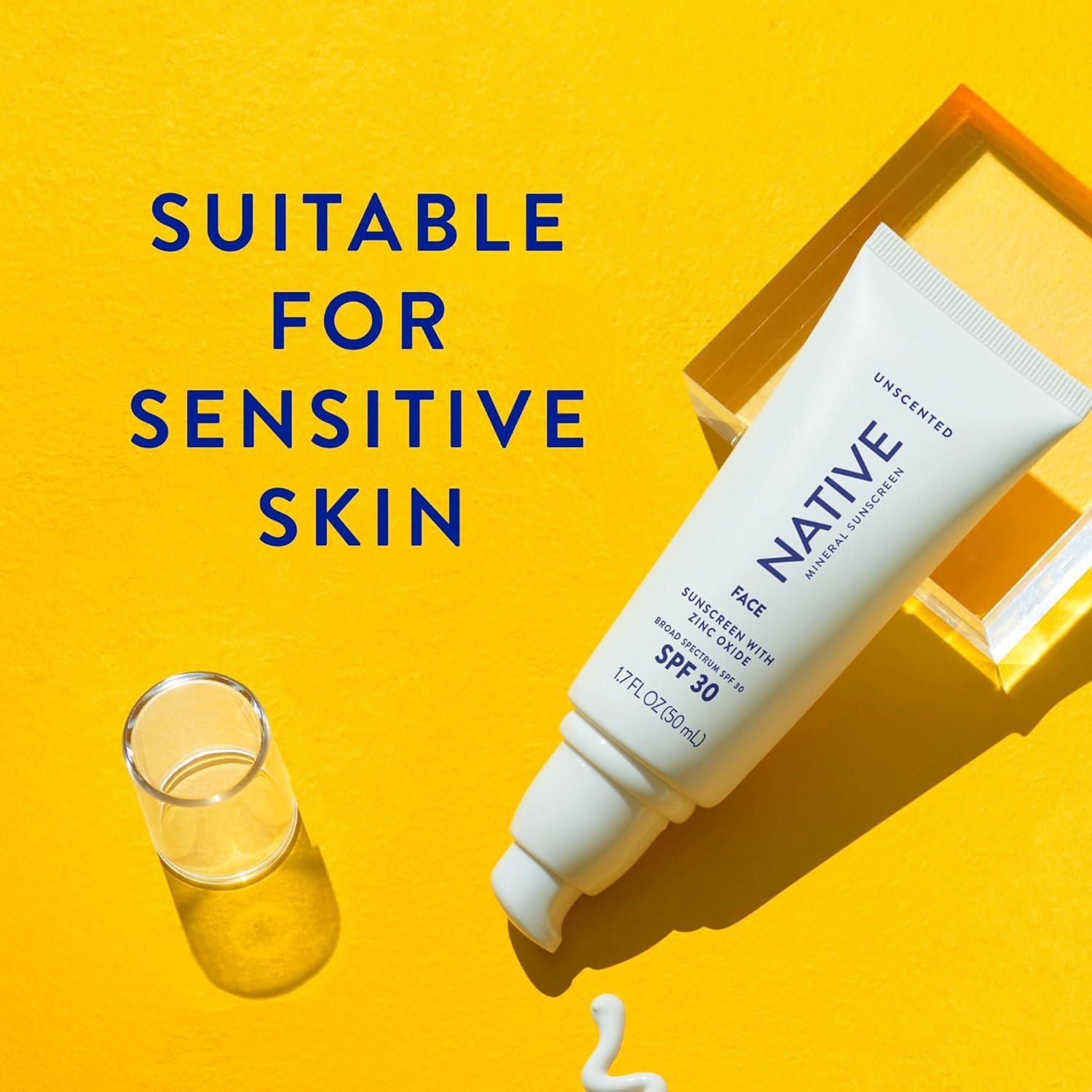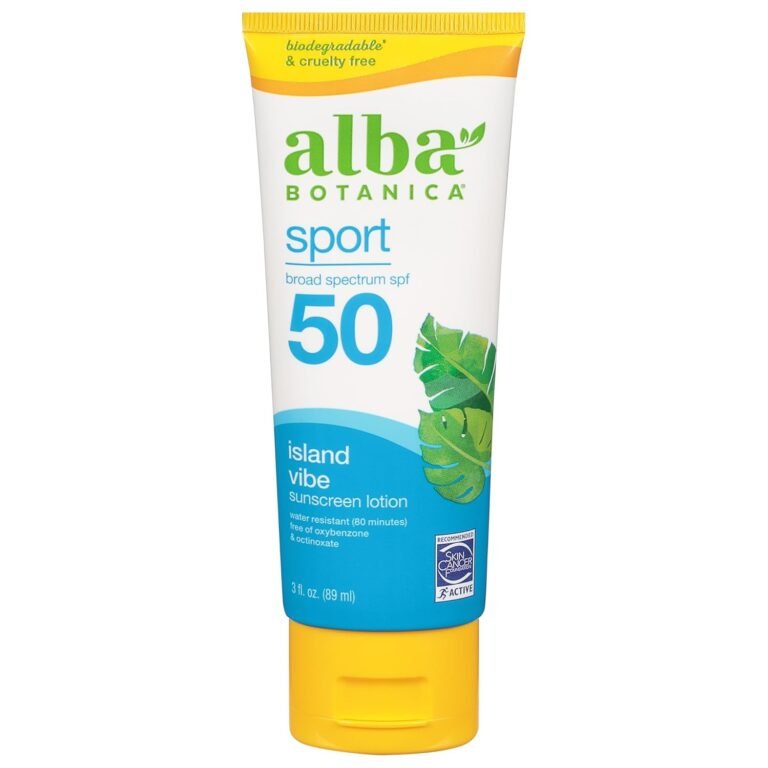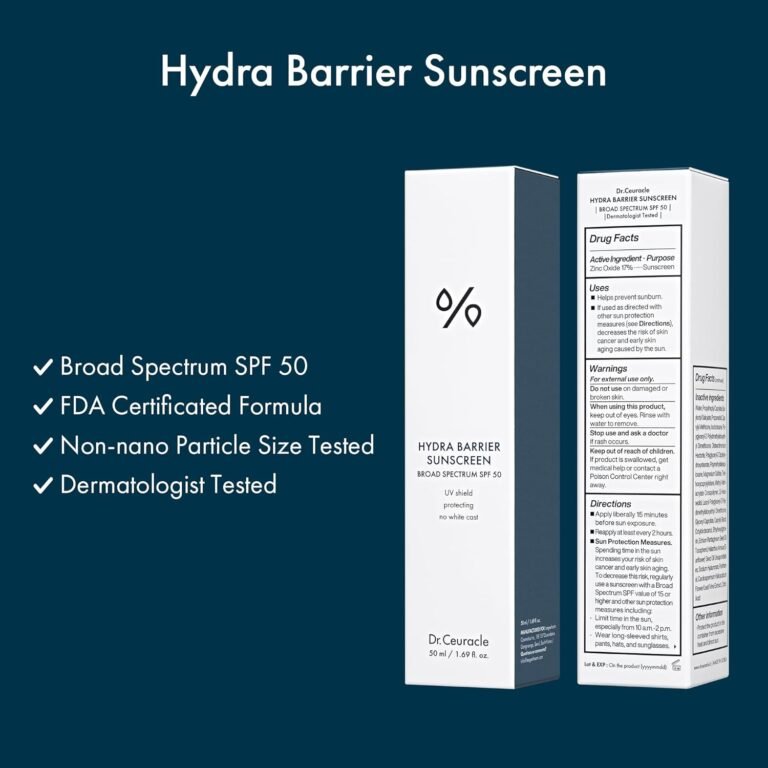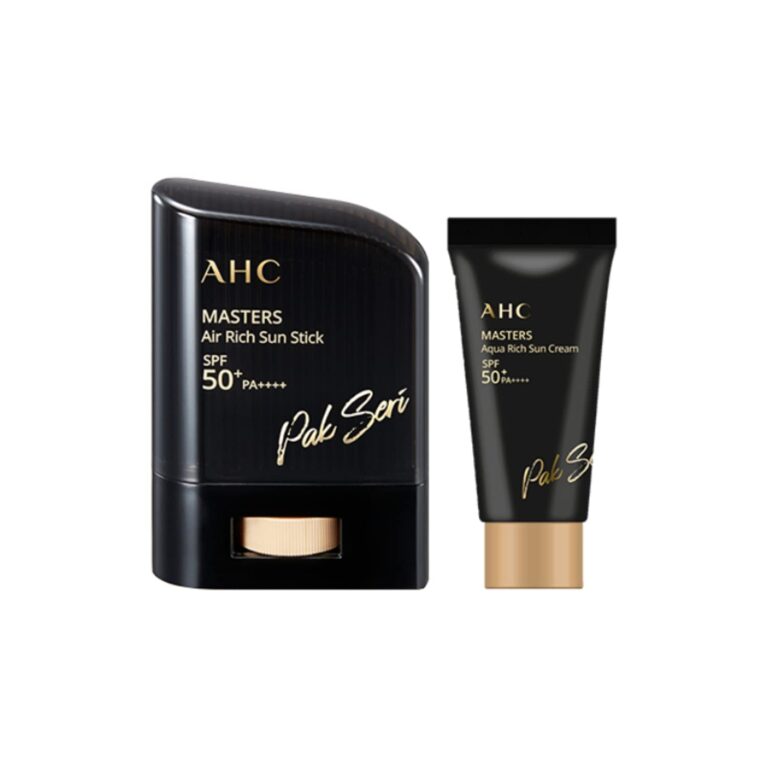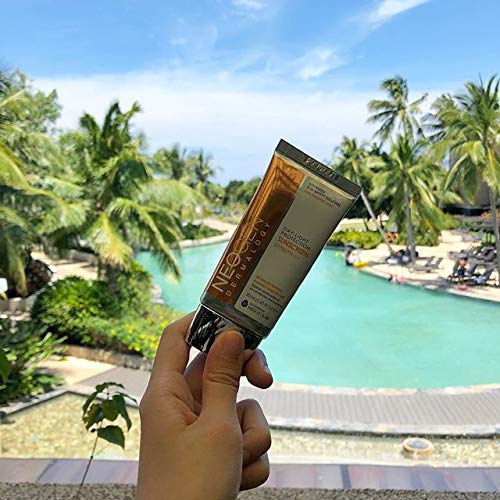My Honest Native Sunscreen Review
Did you know that according to the Skin Cancer Foundation, using SPF 15 sunscreen daily reduces your risk of developing squamous cell carcinoma by about 40% and melanoma by 50%? Despite these compelling statistics, many people avoid sunscreen due to concerns about chemical ingredients, uncomfortable textures, or unsightly white cast. If you’re one of the many searching for a cleaner alternative, this Native sunscreen review will help you determine if this popular mineral option deserves a spot in your daily routine.
Native has built a loyal following with their aluminum-free deodorants and clean body care products, but how does their sunscreen line measure up? As someone who has tested dozens of mineral sunscreens across various skin types and activities, I’ve put Native’s sunscreen through rigorous real-world testing to bring you this comprehensive review. Whether you’re concerned about sensitive skin reactions, environmental impact, or simply finding a sunscreen you’ll actually enjoy using daily, this native sunscreen review covers everything you need to know before making your purchase.
Product Overview
Native sunscreen is a mineral-based sun protection product from the same brand known for their natural deodorants and body washes. The line includes facial sunscreens and body sunscreens, both offering SPF 30 broad-spectrum protection. The products come in recyclable packaging consistent with Native’s eco-friendly brand image—typically in 1.7 oz tubes for face products and 5 oz tubes for body formulations.
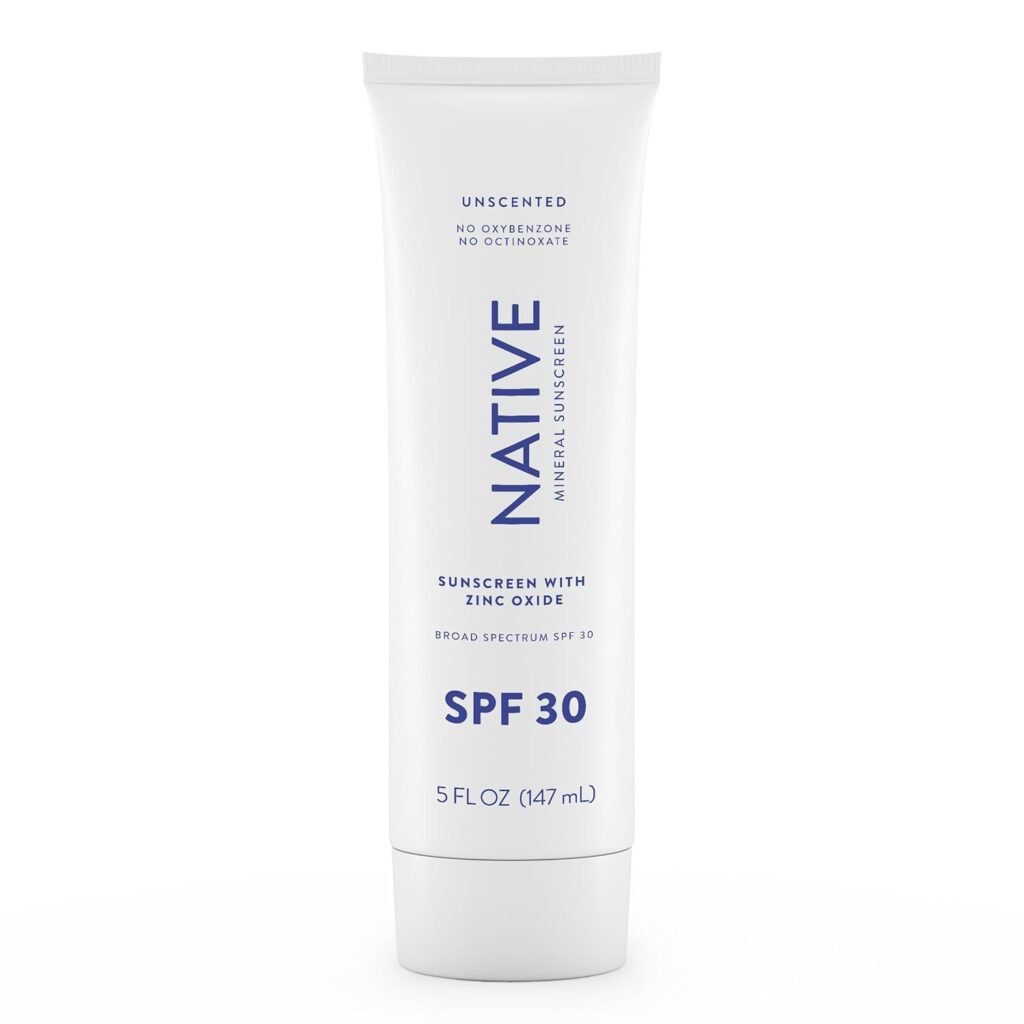
As a mineral sunscreen, Native relies on non-nano zinc oxide as its primary active ingredient rather than chemical UV filters. The formulation is marketed as “clean,” meaning it’s free from ingredients like oxybenzone, octinoxate, and parabens that some consumers prefer to avoid. Native also proudly advertises their sunscreen as reef-safe, making it a popular choice for environmentally conscious consumers.
What sets Native sunscreen apart from many competitors is its commitment to creating mineral protection that blends easily without the notorious white cast that plagues many zinc-based formulas. The product comes in a lightweight, non-greasy formula designed for daily use, with variations for sensitive skin and face-specific application.
Key Ingredients & Formulation
Understanding the ingredients in your sunscreen is crucial, especially if you have sensitive skin or specific concerns. Here’s a breakdown of what makes Native sunscreen unique:
Active Ingredient:
- Non-nano Zinc Oxide (20%): Works as a physical barrier that sits on top of the skin to reflect and scatter UVA and UVB rays. The non-nano formulation means the particles are large enough not to be absorbed into the bloodstream, addressing safety concerns some consumers have with chemical sunscreens.
Key Inactive Ingredients:
- Coconut Oil and Shea Butter: Provide hydration and create a smooth application experience.
- Vitamin E: Offers antioxidant properties that help protect the skin from free radical damage.
- Aloe Vera: Soothes the skin and adds additional hydration benefits.
- Cucumber Extract: Provides a cooling sensation and helps with inflammation.
What you won’t find in Native sunscreen is equally important to many users:
- No oxybenzone or octinoxate (chemicals linked to coral reef damage)
- No synthetic fragrances
- No parabens
- No phthalates
- No sulfates
The formulation strikes a delicate balance between effective sun protection and cosmetic elegance. While many mineral sunscreens feel thick and leave a white residue, Native has engineered their formula to be more user-friendly. The 20% zinc oxide concentration is higher than many comparable products, offering robust protection while the supporting ingredients help mitigate some of the typical drawbacks of mineral formulations.
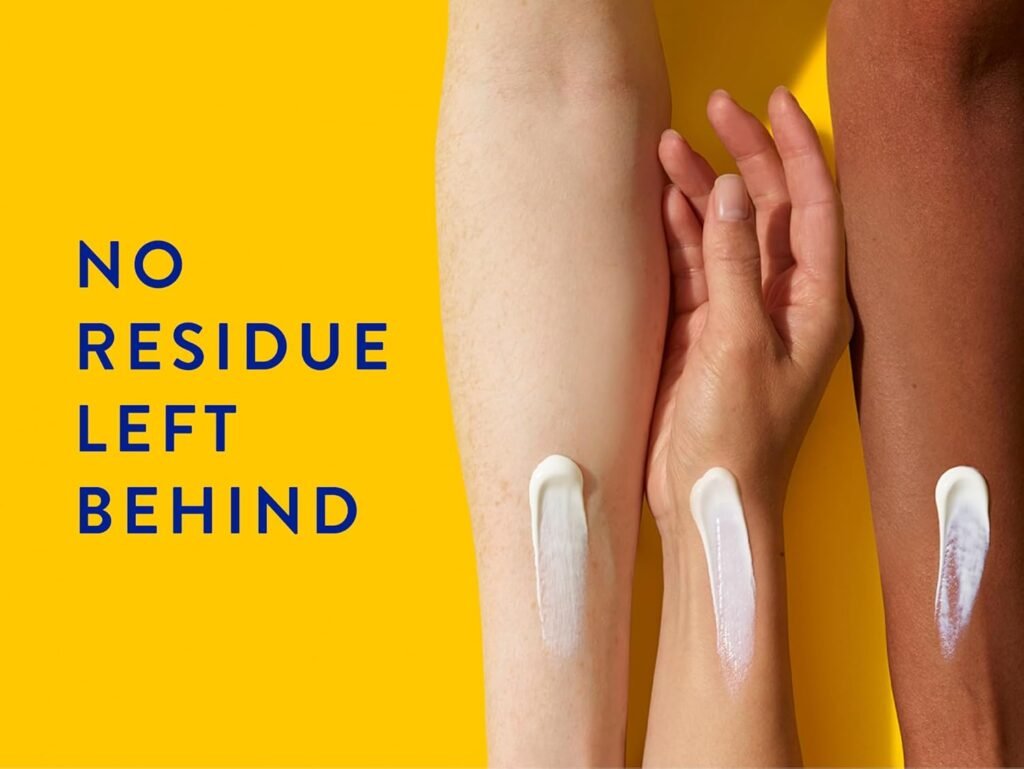
Performance & Real-World Use
Having tested Native sunscreen in various conditions—from everyday errands to beach days and hiking trips—I can speak to its real-world performance across different scenarios.
Daily Wear
For everyday use, Native sunscreen performs admirably. The facial formula absorbs quite well for a mineral product, though it does take slightly more rubbing in than chemical sunscreens. Once applied, it creates a smooth base that works reasonably well under makeup, though those with very dry skin might need additional moisturizer underneath.
The formula doesn’t pill or ball up throughout the day, which is a common issue with mineral sunscreens. It maintains a natural finish—not too matte nor too dewy—making it versatile for various skin types. Those with oily skin might appreciate its ability to control shine throughout the day.
Active Outdoor Use
During more intense outdoor activities, Native sunscreen holds up well against sweat for about 40 minutes before needing reapplication. While it’s advertised as water-resistant for up to 80 minutes, my experience suggests reapplying more frequently if you’re swimming or sweating heavily.
The formula doesn’t sting eyes when sweating, which is a significant advantage over many chemical sunscreens. This makes it particularly suitable for activities like running or hiking where sweat can cause irritation with other products.
White Cast Assessment
The white cast situation deserves special mention in Native mineral sunscreen reviews. While Native has made commendable efforts to minimize white cast, it’s not entirely absent—especially on darker skin tones. The cast is significantly less pronounced than many other mineral options on the market, but those with deep skin tones should be aware that some initial whiteness occurs, though it does fade somewhat as it absorbs.
On fair to medium skin tones, the white cast is minimal and disappears almost completely after thorough blending. Native has achieved this through their formulation technique, using specially coated zinc oxide particles that offer better transparency without sacrificing protection.
Pros and Cons
After extensive testing for this native sunscreen review, here’s a balanced assessment of the product’s strengths and limitations:
Pros:
- Clean, Simple Formula: Free from controversial chemicals and suitable for sensitive skin
- Strong Protection: 20% zinc oxide provides excellent broad-spectrum coverage
- Minimal Fragrance: Light, natural scent that dissipates quickly
- Environmentally Friendly: Reef-safe formula and recyclable packaging
- No Eye Stinging: Doesn’t irritate eyes when sweating
- Good Texture: Less chalky than many mineral competitors
- Skin Benefits: Contains nourishing ingredients beyond sun protection
Cons:
- Some White Cast: Though minimal compared to competitors, still noticeable on darker skin tones
- Price Point: More expensive than drugstore options ($20-25 range)
- Reapplication Challenges: Can build up with multiple applications
- Limited Availability: Not as widely available as some mainstream brands
- Absorption Time: Requires more rubbing in than chemical alternatives
- Limited SPF Options: Only available in SPF 30, no higher protection options
How to Use Effectively
For optimal protection and performance from your Native sunscreen, follow these application guidelines:
Step-by-Step Application Process:
- Shake Well: This ensures the zinc oxide particles are evenly distributed.
- Apply Generously: Use approximately a nickel-sized amount for your face and a shot glass full for your body.
- Section Application: Work in sections rather than trying to cover large areas at once.
- Blend Thoroughly: Use circular motions and take your time blending to minimize white cast.
- Wait Before Makeup: Allow 2-3 minutes for the sunscreen to set before applying makeup.
- Reapply Regularly: Every two hours during continuous sun exposure or after swimming/sweating.
Pro Tips for Best Results:
- Apply to clean, moisturized skin for easier blending
- For face application, warm the product between your fingers before applying
- Use a gentle patting motion for final blending rather than rubbing
- For body application, apply it indoors 15 minutes before sun exposure
- For children or sensitive areas, apply it first to your hands, then transfer to the skin
- Store at room temperature to maintain consistency
When applying Native sunscreen under makeup, it works best when you use a pressing or patting motion rather than rubbing. This prevents the sunscreen from balling up and creates a smoother canvas for foundation.
Comparison With Similar Products
To provide context for this native sunscreen review, let’s see how it compares to other popular mineral sunscreen options:
Native vs. Bare Republic Mineral Sunscreen
- Texture: Native offers a smoother application with less white cast
- Ingredients: Both use non-nano zinc oxide, but Native includes more skin-nourishing additives
- Performance: Native blends better but Bare Republic offers higher SPF options (up to SPF 50)
- Price: Native is approximately 15% more expensive
- Value: Native’s superior texture justifies the higher price point for daily use
Native vs. Supergoop! Mineral Sheerscreen
- Texture: Supergoop! has a slightly more elegant finish with almost no white cast
- Ingredients: Both are clean formulas, but Supergoop! includes more antioxidants
- Performance: Supergoop! performs better under makeup, while Native excels for active use
- Price: Supergoop! comes at a 25-30% premium over Native
- Value: Native offers better value for body application, while Supergoop! might edge it out for face use
This comparison reveals that Native occupies a sweet spot in the mineral sunscreen market—offering better cosmetic elegance than budget options while remaining more affordable than premium alternatives. For those prioritizing a balance between performance and price, Native represents a solid middle-ground option.
Who It’s Best For
Based on extensive testing and analysis for this native sunscreen review, here’s guidance on who would benefit most from this product:
Ideal For:
- Sensitive Skin Types: The gentle, clean formula works well for those who react to chemical filters
- Environmental Advocates: Those prioritizing reef-safe, environmentally friendly products
- Natural Beauty Enthusiasts: Consumers who prefer minimal, clean ingredients in their skincare
- Light to Medium Skin Tones: People who won’t experience significant white cast issues
- Combination to Oily Skin: The formula provides a natural, non-greasy finish
- Active Lifestyles: Good for those who need sweat-resistant but non-irritating protection
Less Suitable For:
- Very Dry Skin: May need additional moisturizer underneath
- Deeper Skin Tones: Despite improvements, white cast remains a challenge
- Budget Shoppers: More affordable options exist (though with different formulations)
- High SPF Seekers: Only available in SPF 30, which may not be sufficient for very fair skin or extreme sun exposure
- Luxury Skincare Users: Those seeking premium textures might prefer higher-end options
Native sunscreen hits the sweet spot for consumers transitioning from conventional to clean beauty products who don’t want to sacrifice performance. It’s particularly well-suited for everyday protection rather than intense beach days or outdoor sports, though it can handle moderate activity with proper reapplication.
Common Questions & Concerns
Throughout my research for this native sunscreen review, several concerns consistently emerged from potential users. Here are straightforward answers to the most common questions:
White Cast Concerns
Native sunscreen does leave some initial white cast, particularly on medium to deep skin tones. While it’s less pronounced than many mineral competitors and does fade somewhat with thorough blending, it’s not entirely invisible. The facial formula performs better in this regard than the body version.
Sensitivity Issues
This is where Native truly shines. The minimal ingredient list and absence of common irritants make it suitable for sensitive and reactive skin types. In my testing, it caused no breakouts, rashes, or irritation, even when used around the delicate eye area or on skin conditions like mild rosacea.
Reapplication Reality
Reapplication, a challenge with all mineral sunscreens, works reasonably well with Native. For face reapplication over makeup, patting rather than rubbing helps preserve your look. The product builds up slightly with multiple applications but doesn’t become excessively heavy or greasy when applied in appropriate amounts.
Texture Expectations
First-time mineral sunscreen users should adjust their expectations—Native feels different from chemical formulations. It has a creamier initial texture that requires more blending but settles to a natural, non-greasy finish. It doesn’t feel sticky or tacky once absorbed.
Makeup Compatibility
Native works under makeup with some caveats. Allow 3-5 minutes of setting time before makeup application for best results. It pairs well with liquid foundations but may cause some pilling with silicone-heavy primers. Setting with a light powder helps maintain longevity when worn under makeup.
Native Sunscreen Review: Conclusion
After thorough testing for this native sunscreen review, I can confidently say that Native has created a mineral sunscreen that addresses many of the category’s typical shortcomings. Its clean, reef-safe formula provides reliable SPF 30 protection without the heavy, pasty feel that makes many consumers avoid mineral options altogether.
The product excels in everyday wearability, particularly for sensitive skin types and those concerned about chemical UV filters. Its ability to blend relatively well while maintaining strong protection represents a significant achievement in mineral sunscreen technology. The addition of skin-nourishing ingredients elevates it beyond mere sun protection to a beneficial skincare step.
However, it’s not without limitations. Those with deeper skin tones may still experience some white cast despite Native’s formulation improvements. The price point, while reasonable for a clean beauty product, positions it above drugstore alternatives. Additionally, the limited SPF options may not satisfy those seeking higher protection levels.
For environmentally conscious consumers with sensitive skin who prioritize clean ingredients, Native sunscreen offers impressive value and performance. It strikes an effective balance between protection, wearability, and ethical formulation that’s difficult to find in a single product.
Would I recommend it? Absolutely—particularly for daily use by those with light to medium skin tones who prioritize clean ingredients and environmental considerations. It’s earned its permanent place in my sun protection rotation, especially for sensitive skin days and everyday urban exposure.
FAQs
Is Native a good sunscreen brand?
Yes, Native is a reputable sunscreen brand that offers effective mineral protection with clean, reef-safe ingredients, making it particularly suitable for sensitive skin and environmentally conscious consumers.
What are the ingredients in native sunscreen for face?
Native facial sunscreen contains non-nano zinc oxide (20%) as its active ingredient, along with coconut oil, shea butter, vitamin E, aloe vera, and cucumber extract, while avoiding parabens, sulfates, and synthetic fragrances.
Does Native sunscreen leave a white cast?
Native sunscreen does leave some initial white cast, especially on deeper skin tones, but it’s less pronounced than many mineral sunscreens and diminishes considerably with thorough blending.
Is Native sunscreen good for sensitive skin?
Native sunscreen is excellent for sensitive skin due to its minimal, clean ingredient list, absence of common irritants, and reliance on gentle zinc oxide rather than potentially irritating chemical filters.
How does Native sunscreen compare to Supergoop?
Native sunscreen offers similar protection to Supergoop’s mineral options but at a lower price point, with slightly more white cast but comparable performance for everyday protection.
Is Native sunscreen water-resistant?
Yes, Native sunscreen is water-resistant for up to 80 minutes, though real-world testing suggests reapplication after 40 minutes of swimming or heavy sweating for optimal protection.
Can I use Native sunscreen under makeup?
Native sunscreen works well under makeup when allowed to set for 3-5 minutes before makeup application, creating a smooth base that doesn’t pill with most foundations.
Where is Native sunscreen made?
Native sunscreen is manufactured in the United States using globally sourced ingredients, following the brand’s commitment to quality and ethical production standards.
Where to Buy
There aren’t many places you can purchase Native sunscreen. You can find Native sunscreen at Amazon.
Native products are also available directly through their website, at Target stores nationwide, and occasionally at specialty beauty retailers. For the freshest product and most consistent availability, I recommend purchasing through Amazon or directly from Native’s official website.

